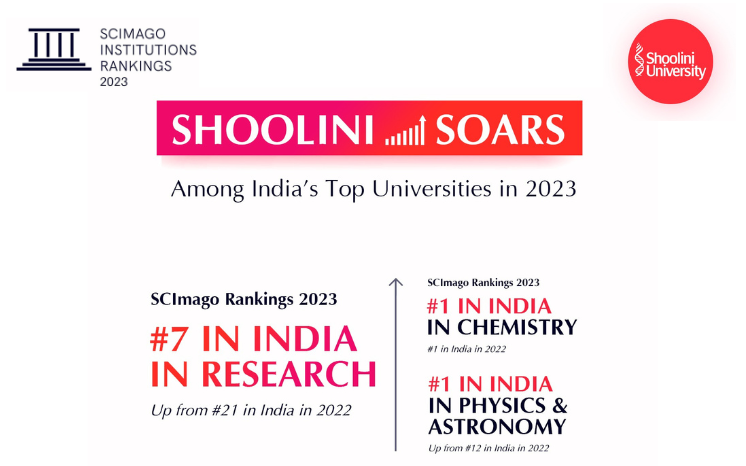
Shoolini University has been ranked No.1 in the country in Chemistry, Physics and Astronomy; 3rd in Environmental Science and Mechanical Engineering & 7th in Research in the Scimago Global Rankings 2023.
Solan, March 14
Shoolini University has been ranked No.1 in the country in Chemistry, Physics and Astronomy, and third in Environmental Science and Mechanical Engineering in the Scimago Global Rankings 2023.
The university has also secured the 7th rank in research across the country, significantly improving its previous position of 21.
In addition, the university has been ranked 12th in Engineering, 15th in Energy, 39th in Plant Science, 41st in Food Science, 61st in Agriculture and Biological Science, and 69th in Pharmacology, Toxicology, and Pharmaceutics. Moreover, the university has a global ranking of 1561 out of 4533 top higher educational institutions worldwide.
Chancellor Prof PK Khosla congratulated all the faculty, staff, and students for their achievements in the rankings. He further stated that the university would continue to focus on research and quality education.
Shoolini University Pro Chancellor Vishal Anand said these achievements reflected the university's multidisciplinary research approach and commitment to making significant contributions in a wide range of disciplines.
Shoolini University Vice Chancellor Prof Atul Khosla expressed his satisfaction with the university's consistent improvement in the rankings, indicating that the university is on the right track.
The Scimago Institutions Rankings are a globally recognised ranking of scientific institutions published by Scimago Laboratories in collaboration with Elsevier. The indicators used in the ranking are divided into three distinct groups that aim to reflect the scientific, economic, and social characteristics of institutions. The research component, which accounts for 50% of the overall weightage, evaluates institutions based on their research performance, productivity, scientific leadership, high-quality publications, international collaboration, and other related factors.
The innovation component, which comprises 30% of the weightage, assesses an institution's performance based on the number of patents filed and the number of patents that cite the institution's research. The third component, which accounts for 20% of the weight, measures the societal impact of institutions.
